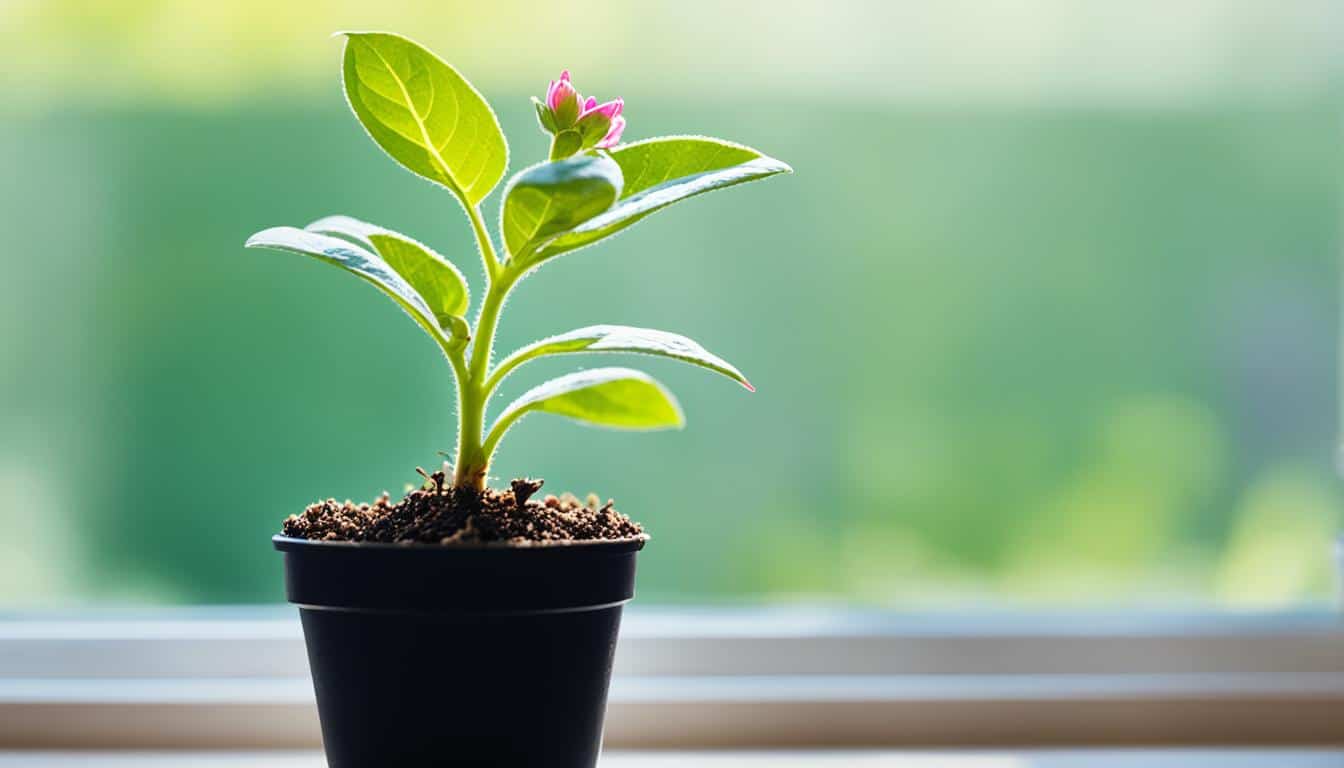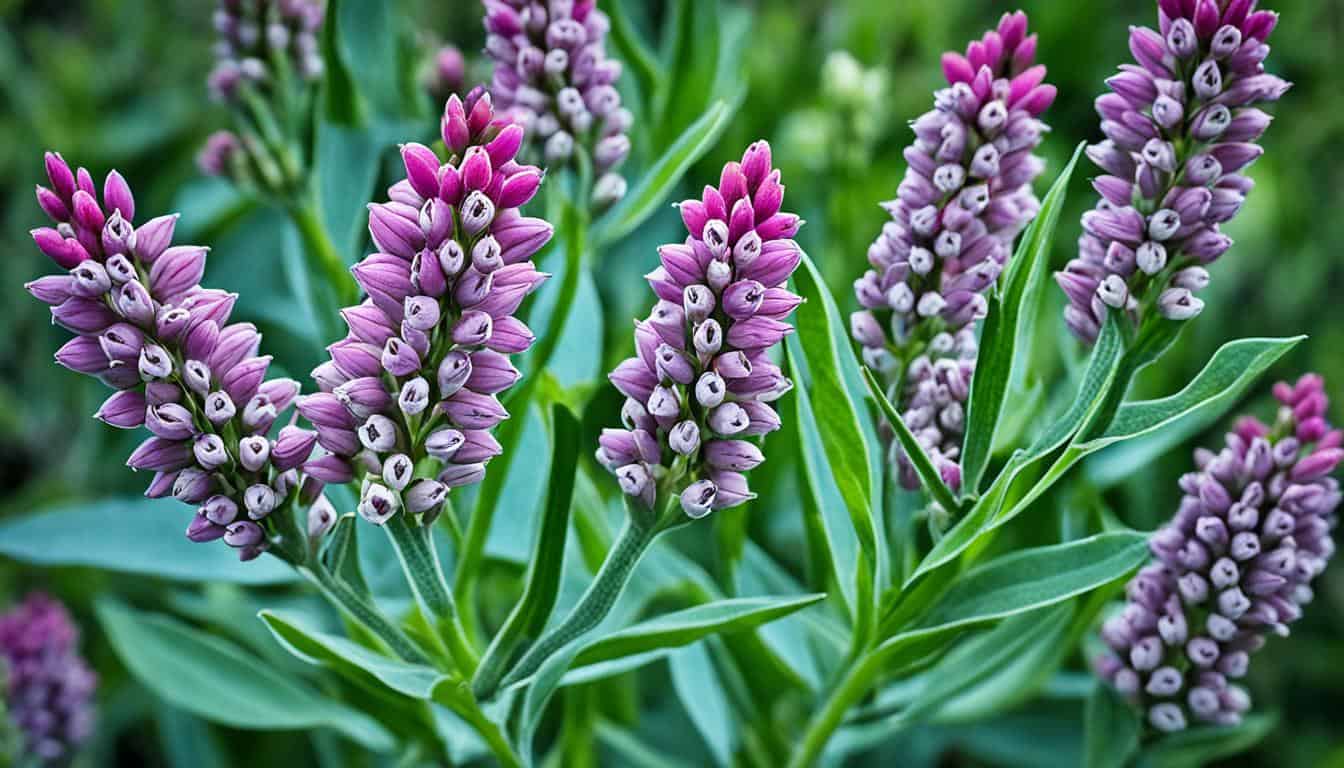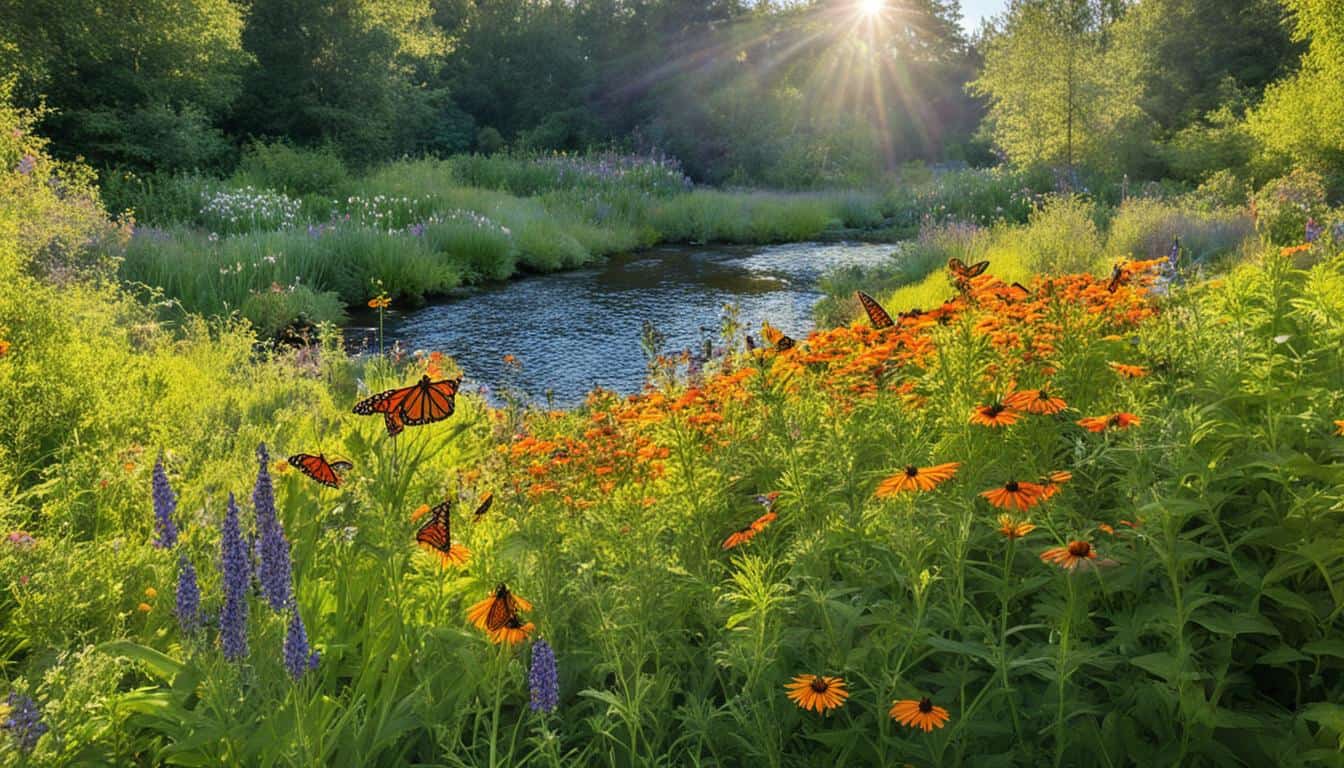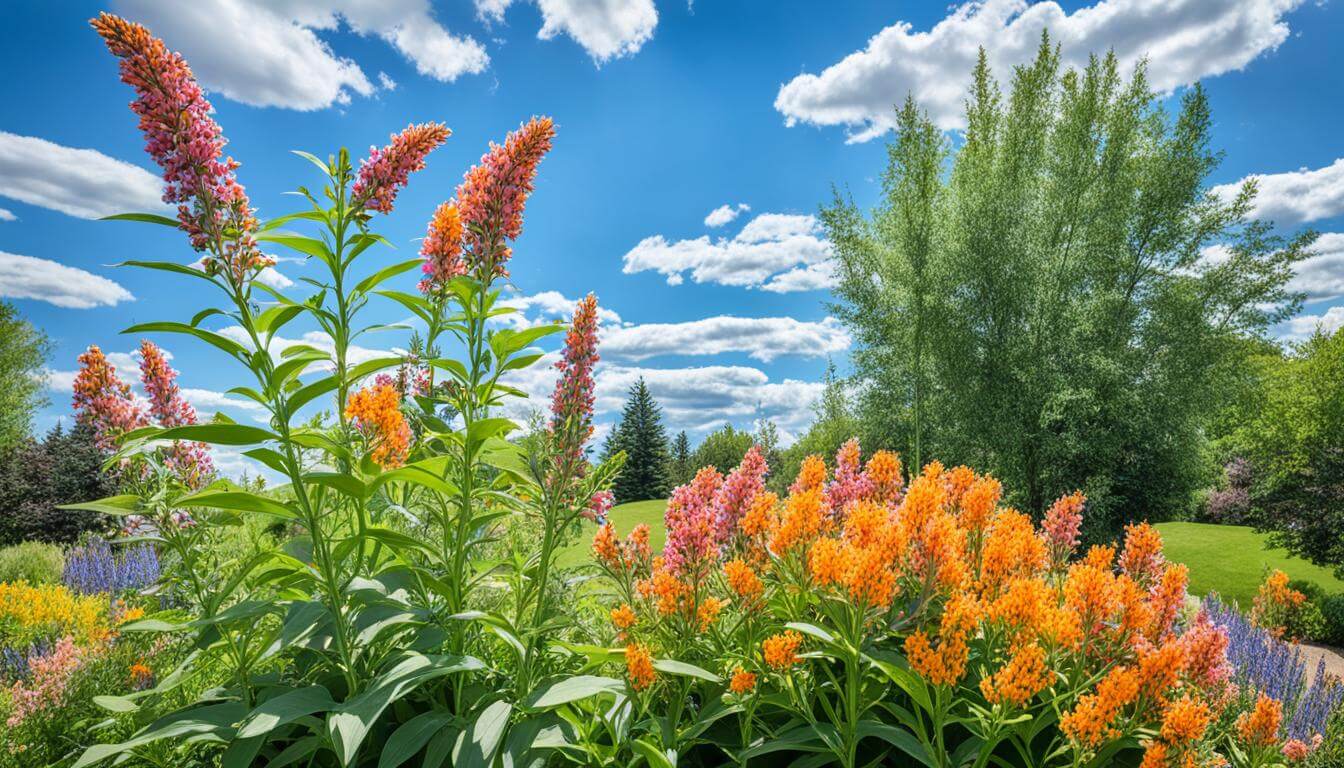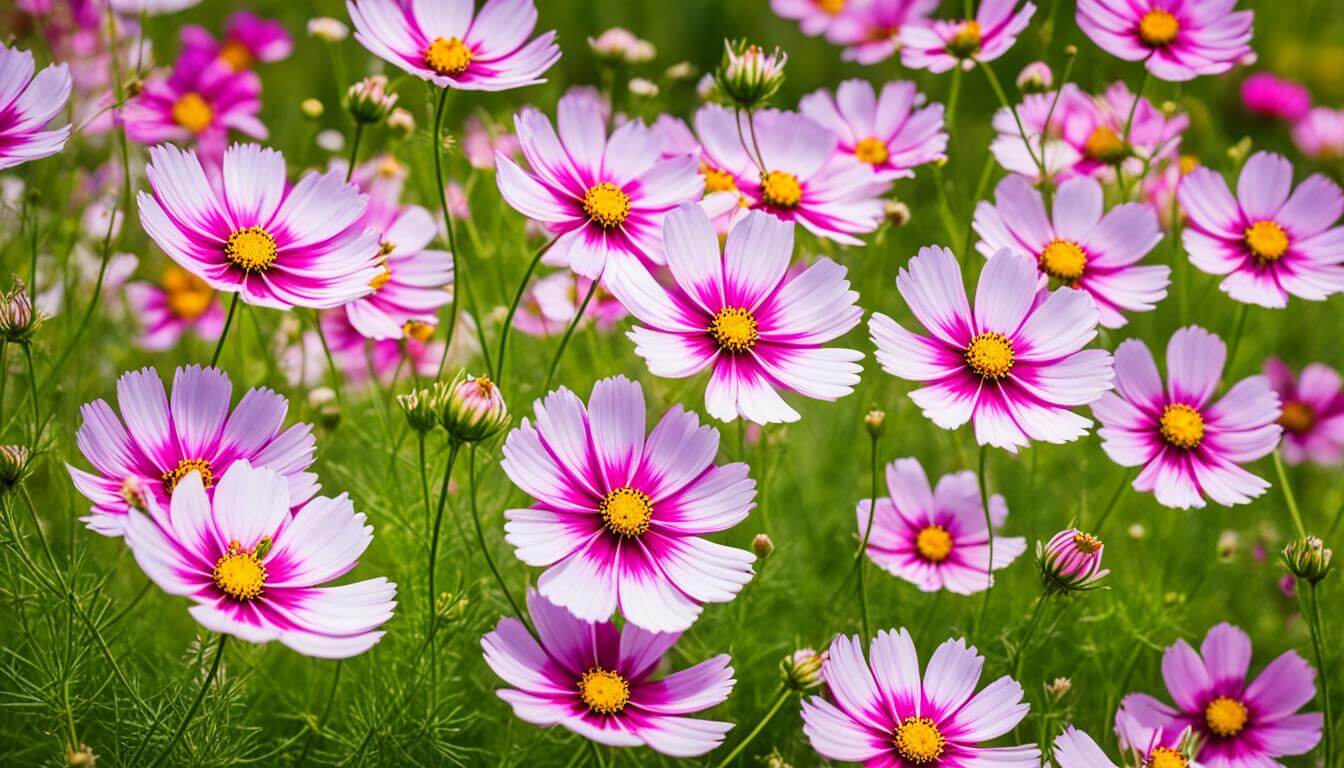Welcome, fellow green thumbs and conservationists, as we embark on an educational expedition to grow milkweed from seed. There's a noble incentive tethered to these verdant pursuits, as our floral ambition aids the survival of regal monarch butterflies. Milkweed is not merely a plant; it's the lifeline of these illustrious lepidopterans, providing essential habitat and sustenance. Introducing rose milkweed and swamp milkweed seeds into our gardens cultivates beauty and bolsters native plants that are pivotal for ecological harmony. Learning how to grow rose/swamp milkweed from seed will help protect the butterflies. Adding flower seeds to your heirloom garden is a must for protecting pollinators.
This guide will unravel the secret to nurturing these seeds into thriving milkweed plants. Notorious for their finicky germination, milkweed seeds demand tender care that leads to gratifying horticultural victories when mastered. Whether your soil is rich or modest, swamp milkweed's adaptability gives it the resilience to flourish across various terrains, making it a beloved addition to any garden aiming to champion biodiversity.
Join us as we detail the fundamental steps from seed selection to patient nurturing, all toward the goal of germination success. Together, let us cultivate a floral haven for our winged friends, stitching the fabric of nature's tapestry one seed at a time.
Key Takeaways
- The journey to grow milkweed from seed is a captivating and vital endeavor for environmental stewardship.
- Rose and swamp milkweeds are visually stunning and play a critical role as native plants for monarch butterflies.
- Proper knowledge and patience are required to ensure the successful germination of swamp milkweed seeds.
- Cultivating rose milkweed contributes to crafting ecosystems supportive of biodiversity and helps maintain the fragile balance of our local habitats.
- We will guide you through identifying, prepping, planting, and nurturing these vital milkweed varieties to ensure your gardening efforts are productive and rewarding.
Rose (Swamp) Milkweed Seeds
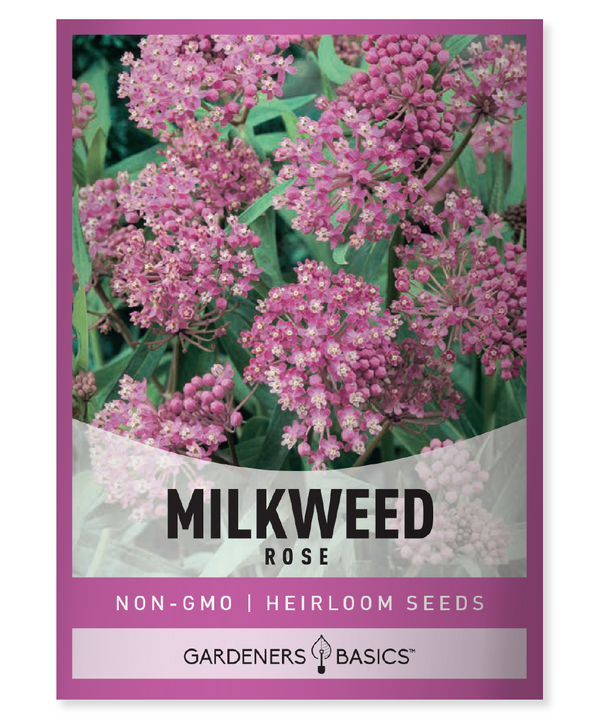
$2.49
Rose Milkweed Seeds - Heirloom, Non-GMO, Non-Hybrid, Open-Pollinated for Beautiful Pollinator-Friendly Gardens Enhance your garden with Rose Milkweed seeds (Asclepias incarnata), a stunning perennial favorite among butterflies, bees, and other pollinators. These heirloom, non-GMO, non-hybrid, open-pollinated seeds produce elegant clusters… read more
Rose/Swamp Milkweed Basics
- Days till maturity: Swamp Milkweed typically reaches maturity and blooms in its second or third year of growth, as the first year is often dedicated to establishing its root system.
- Planting depth: Seeds should be about 1/8 to 1/4 inch (3 to 6 mm).
- Plant spacing: Space plants about 18 to 24 inches (45 to 60 cm) apart.
- Days to germination: Germination can take 10 to 20 days; cold stratification for 30 days before planting can improve germination rates.
- Indoors or Direct Sown: Seeds can be started indoors 8 to 12 weeks before the last frost date or sown directly outdoors in fall or early spring.
- Full Sun or Partial Shade: Swamp Milkweed prefers full sun but can tolerate partial shade.
- When to harvest: While not typically harvested, if collecting seeds, wait until the seed pods dry and begin to open, usually in late summer to fall.
- How tall does the plant get? Rose or Swamp Milkweed can grow about 3 to 5 feet (90 to 150 cm) tall.
- How wide does the plant spread? It can be about 2 to 3 feet (60 to 90 cm) wide.
- Native: Swamp Milkweed is native to North America.
- Family: It belongs to the Apocynaceae family, the dogbane family, and is closely related to the Asclepiadaceae family, where milkweeds were previously classified.
Understanding the Importance of Milkweed for Monarch Butterflies
When we delve into the world of milkweeds, we realize its unparalleled significance for the sustainable proliferation of monarch butterflies. These native perennials are more than just a backdrop of vibrant greens and florals; they are indispensable for monarch habitats. Let's explore how these plants serve as vital resources in the lifecycle of these remarkable insects.
The Role of Milkweed in Monarch Habitats
The synergy between milkweed plants and monarch butterflies extends significantly beyond aesthetics. The common milkweed and butterfly weed are central to the monarchs' survival, offering more than sustenance. These milkweeds provide a critical breeding ground where monarchs lay eggs, and the emerging caterpillars find their exclusive source of nutrients within these fibrous greens.
Why Choose Rose/Swamp Milkweed?
As we encourage the growth of milkweed varieties, it is key to highlight Asclepias incarnata, also known as rose or swamp milkweed, for its exceptional contributions. This species boasts resiliency across diverse environments and provides high-quality nutrients and habitat conditions monarchs prefer. It is a flowering powerhouse, generous in its nectar production, thus inviting a plethora of pollinators while offering reprieve and nutrition to adult monarchs. Choosing rose and swamp milkweed means actively bolstering these iconic insects at a pivotal point in their lifecycle.
| Milkweed Variety | Environmental Tolerance | Insect Attraction |
|---|---|---|
| Common Milkweed | Diverse, from dry to moist soils | Caterpillars, Bees, and Adult Butterflies |
| Butterfly Weed | Well-drained soils, drought-resistant | Bees and Butterflies |
| Rose/Swamp Milkweed (Asclepias incarnata) | Moist, clay-heavy soils, adaptable to varying conditions | Monarch Butterflies, especially caterpillars and adults |
As we share our expertise and green-thumb tactics, our collaborative aim is to fortify these splendid milkweed plants within our gardens. We advocate for a flourishing patch of milkweed, a tribute to our environment's health, and a salute to the enduring majesty of the monarchs.
What You Need to Know Before Planting Rose/Swamp Milkweed
As gardeners, we understand the critical role that native plants play in our ecosystems—especially the milkweed, which is indispensable for the survival of the majestic monarch butterfly. Before we delve into sowing the seeds of Asclepias incarnata, commonly known as rose or swamp milkweed, let's take a moment to soak in the essential knowledge needed to ensure that we provide the best conditions for our milkweed to thrive.
Identifying Your Milkweed Variety
Identifying the exact variety of milkweed you plan to cultivate is pivotal. Each milkweed variety has a unique set of requirements and environmental preferences, which impact its growth and the support it offers to local wildlife. Specifically, Asclepias incarnata is favored for its beautiful blooms and ability to adapt to areas with clay soils, which are often problematic for other plants.
Optimal Conditions for Growing Healthy Milkweed Plants
The stage for growing healthy milkweed plants begins with understanding their required conditions. Rose and swamp milkweed take a shine to full sun exposure, which helps their sumptuous blooms, both a visual treat and a nectar-rich stopover for pollinators. Although this milkweed variety tolerates clay soils quite well, ensuring the soil does not become waterlogged is crucial for healthy root development. Proper drainage and a sunny spot are the hallmarks of a happy habitat for Asclepias incarnata.
| Key Element | Asclepias incarnata Preference |
|---|---|
| Sun Exposure | Full sun |
| Soil Type | Clay soils with good drainage |
| Water Requirements | Moist soil, well-drained to prevent root rot |
| Cold Hardiness | Perennial in zones 3-9 |
| Native Habitat | Wetlands, along streams, in low-lying areas |
By honoring these plant preferences, we foster the growth of healthy milkweed plants and contribute to the health and longevity of the monarch population. Our efforts in our gardens echo far beyond the borders of our green spaces, laying the foundations of a vibrant, biodiverse, and balanced ecosystem.
How To Grow Rose/Swamp Milkweed From Seed
For those passionate about nurturing nature's tapestry, learning how to grow milkweed from seed is rewarding. At the heart of this endeavor lies the patience to manage unpredictable germination rates, an intimate understanding of the lifecycle hidden within a seed pod, and the balanced art of keeping the soil moist. We will explore these essential facets, sharing our knowledge to empower you to cultivate robust milkweed plants that sustain the vibrant ecology of your garden.
We begin by procuring seeds directly from the seed pod to embark on this journey. Although simple, this process involves delicate handling to ensure the integrity of the seeds is maintained. Once in possession of these potential-laden parcels, we turn our attention to the soil—arguably the cradle of life for our nascent plants. The key here is consistent moisture; the soil should remain moist to the touch without becoming waterlogged, a fine equilibrium that encourages sprouting while preventing decay.
- Selecting Seeds from the Seed Pod: At the end of the bloom season, carefully harvest the fluff-laden pods and extract the seeds from their silky confines.
- Maintaining Optimal Soil Moisture: Monitor the soil's dampness regularly, ensuring it is moist to the touch yet not saturated.
- Cultivating the Right Conditions: Position your planting area where seeds will receive ample sunlight and are sheltered from harsh conditions that could impede germination.
Our collective goal is to achieve a flourishing growth of milkweed from seed, offering a haven for butterflies and an array of pollinators. By following these considered steps, the probability of germination magnifies, culminating in the emergence of tender seedlings ready to take root in the nurturing expanse of your garden.
Milkweed Seeds For Monarch Butterflies | 4 Variety Pack
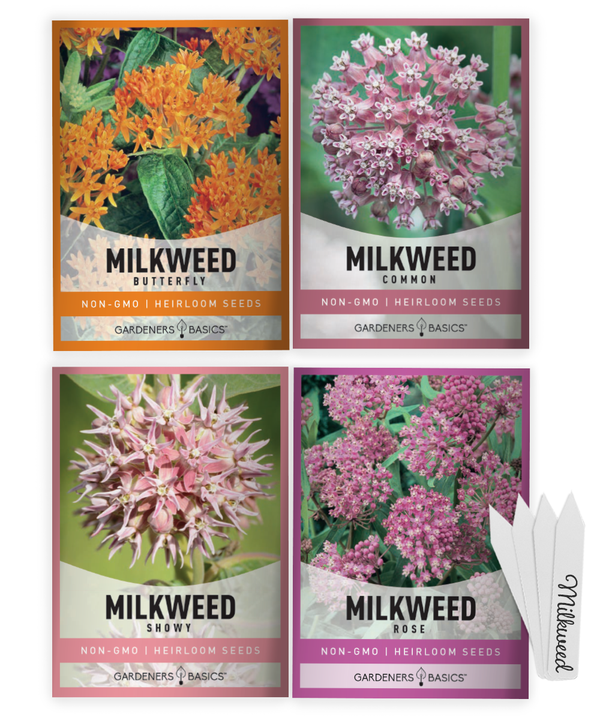
$7.95
Milkweed Seed Assortment For Planting – 4 Stunning Varieties to Attract Monarch Butterflies and Beautify Your Garden Transform your garden into a thriving paradise with our Milkweed Seed Assortment for Planting. This exclusive collection features four exquisite Milkweed varieties -… read more
Prepping Your Seeds: The Cold Moist Stratification Process
Embarking on the journey to grow milkweed from seed, one crucial step stands between the dormant swamp milkweed seeds and their future flourishing garden presence: cold, moist stratification. This preparatory measure greatly enhances germination rates, simulating the natural winter conditions essential to breaking seed dormancy. As diligent gardeners, we understand the power of this preparatory step, and we're here to guide you through the stratification process, ensuring your seeds are poised for success.
Why Stratification Boosts Germination Rates
The mystique surrounding the awakening of swamp milkweed seeds lies in an elegant dance with nature's rhythms. Cold, moist stratification gently nudges the seeds from their slumber, mirroring the winter's freeze and thaw cycles they require to break internal dormancy barriers. By orchestrating these conditions artificially, we significantly increase the likelihood of sprouting once planted, giving life to a new generation of milkweed essential for sustaining local ecology and monarch butterflies.
Step-by-Step Guide to Cold-Stratifying Milkweed Seeds
We aim to achieve peak germination rates for our prized swamp milkweed seeds. To facilitate this, we offer a detailed blueprint for cold, moist stratification, providing your seeds with the best possible outset:
- Gather Supplies: You will need swamp milkweed seeds, a sealable plastic bag, a paper towel, and some water.
- Moisten the Paper Towel: Dampen the paper towel with water, ensuring it's moist but not dripping.
- Wrap the Seeds: Place the swamp milkweed seeds within the folds of the moist paper towel, offering them the crucial moisture needed during stratification.
- Seal and Label: Carefully place the paper towel with seeds into the plastic bag, seal it, and label it with the date and species to maintain organization.
- Refrigerate: Place the sealed bag in the refrigerator, not the freezer, mimicking the cold conditions the seeds naturally endure. An ideal temperature is between 33°F and 40°F (0.5°C and 4.5°C).
- Wait and Check: Allow the seeds to stratify for 30 to 60 days, checking periodically to ensure the paper towel remains moist but not wet.
- Remove and Plant: After the stratification period, remove the seeds from the refrigerator and prepare for planting, as they are now primed for optimal germination.
With these steps, we have equipped you to master the art of cold, moist stratification, setting the stage for successfully transforming swamp milkweed seeds into thriving milkweed plants. Stay tuned as we delve into the subtleties of planting these well-prepped seeds, nurturing them from delicate beginnings to become integral components of your garden's ecosystem.
Planting Your Stratified Milkweed Seeds
With your milkweed seeds primed through stratification, a critical moment has arrived—planting. Our collective success depends heavily on providing the best soil types that facilitate robust growth for the milkweed plant, ensuring it becomes a thriving haven for pollinators. The ideal soil impacts overall plant health and is vital for the first tender shoots from your carefully tended seeds.
Best Soil Types for Milkweed Plant Success
Success in growing milkweed starts beneath the surface—soil selection is paramount. Striking a balance in soil components is key for the germinated seeds of the milkweed. While clay soils are renowned for being challenging, they fit the bill perfectly regarding milkweed plant success. Their ability to retain moisture while offering essential drainage lays the groundwork for a nurturing environment.
However, not all clay soils are created equal; the best ones for our purpose are well-amending, allowing for necessary air and water flow. Here's a table outlining the soil types ideal for planting milkweed seeds:
| Soil Type | Benefits for Milkweed | Considerations |
|---|---|---|
| Loamy Soil | Rich in nutrients and maintains ideal moisture | Check for proper drainage |
| Clay Soil | Holds nutrients and water well | Amend with organic matter to improve structure |
| Sandy Clay | Good for root development | It may require more frequent watering |
| Peaty Soil | High water retention | Monitor for excess moisture to avoid root rot |
These soil types, notably clay, whose ability to hold nutrients and water, represent our best allies in this greening quest. The goal is to create a deeply nourishing home for the seeds to transform into blooming milkweed plants.
Maintaining Proper Soil Moisture Levels
Choosing the correct soil type to maintain appropriate soil moisture levels is vital. Achieving just the right amount of moisture is a balancing act that can dictate the trajectory of milkweed growth. Too much water and the seeds may suffocate or fall prey to fungal issues—too little, and they might never germinate. Here's how we keep moisture levels in check:
- Mulching: A layer of mulch can help retain moisture in the soil, reducing the need for frequent watering.
- Watering Schedule: If natural rainfall isn't sufficient, establish a consistent schedule for watering the soil. Early morning is usually the best time to water plants.
- Drainage Check: Regularly ensure the soil allows excess water to drain away effectively.
- Soil Texture Maintenance: Integrate organic materials like compost to ensure the clay soil remains aerated and can hold the ideal moisture level.
Maintaining soil moisture within your garden's bed is attentive and regular care. You nurture the soil, and the soil, in turn, nurtures the milkweed, cultivating a living emblem of persistence.
In summary, our endeavors to sow the future of milkweed plant success begin with the soil. By planting your stratified seeds in the best soil types—loam or enriched clay soils—and vigilantly managing moisture levels, you lay the foundation for a luscious milkweed garden. It's a practice of patience and precision that blooms into sustenance for monarchs and beauty for our surroundings.
Wildflower, Perennial, & Annual Flower Seed Kit | 35 Variety Pack
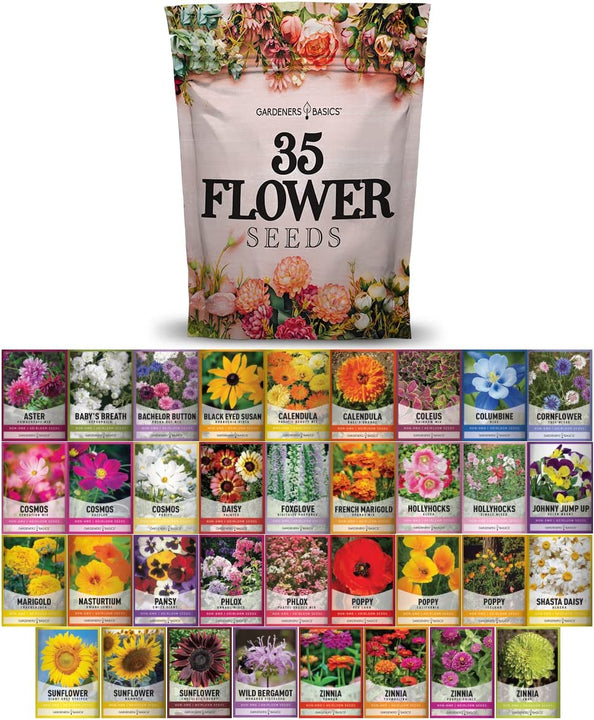
$29.95
$49.95
35 Flower Seeds Variety Pack – Heirloom, Non-Hybrid, Non-GMO, Open-Pollinated – Perfect for Pollinator-Friendly Gardens Transform your garden with our 35 Flower Seeds Variety Pack, offering a stunning and diverse selection of heirloom, non-hybrid, and non-GMO seeds. Each variety in… read more
Germinating Milkweed Seeds: Timing and Techniques
The excitement of seeing milkweed seeds spring to life is a reward for any gardener committed to fostering biodiversity. Understanding the specifics of seed germination is essential to convert these dormant specks into vibrant, butterfly-sustaining flora. It is common for milkweed seeds to take upwards of 30 days to germinate, a process shaped by various factors, with temperature playing a pivotal role. Our expertise outlines techniques to optimize germination rates and ensure your gardening efforts culminate in a thriving monarch habitat.
The Role of Temperature in Seed Germination
Temperature is a determining factor when coaxing milkweed seeds out of dormancy. The ideal range for propagating these native beauties is between 65°F to 75°F (18°C to 24°C). Ensuring a consistent temperature within this bracket can drastically improve germination rates. The warmth simulates natural conditions, signaling the seeds that it is time to emerge. Here are some tips to maintain optimal temperature:
- Use a heated germination mat to provide a steady heat source.
- Place seeding trays away from drafts in a warm area of your home.
- Monitor ambient temperatures daily to adjust positioning or heating as necessary.
By maintaining these conditions, the slumber of the milkweed seeds is effectively disrupted, guiding them toward successful sprouting.
Monitoring Seedling Progress and Health
As your seeds embark on the 30-day journey towards germination, vigilant observation is key to early identification of any issues. Healthy seedlings are your aim, and rigorous monitoring paves the way. Here's how we can chart our seedlings' course to ensure their vigor:
- Look for the initial signs of sprouting, often small green shoots piercing the soil surface.
- Examine seedlings for robust growth and the absence of discoloration or wilting, which could indicate disease or improper care.
- Adjust water and light as the seedlings develop to cater to their evolving needs.
Attention to these details guarantees that your milkweed seedlings are sprouting and progressing toward stalwart fixtures in your garden's ecosystem.
Gardeners engaging in the delicate art of nurturing milkweed seeds must be armed with patience and knowledge. From temperature management to monitoring progress, every action we take sways the balance of success. Embrace these guidelines to enhance seed germination and celebrate each sprout as a potential monarch haven. Together, let's transform our gardens into verdant stages where the dance of butterflies unfurls.
Caring for Milkweed Seedlings: From Germination to Transplanting
Once the germination process has triumphantly concluded and our milkweed seedlings begin to unfurl their tender leaves, the focus shifts to their care during this fledgling stage. Appropriate light exposure, adequate watering, and the right timing for transplantation are essential to these plants' health and future blooming potential. Our guidance aims to fortify these seedlings, maximizing their contribution to our flourishing gardens and the environment.
The Importance of Full Sun Exposure
Providing our milkweed seedlings with adequate full sun exposure is non-negotiable for their robust development. Sunlight is the catalyst that spurs photosynthesis, propelling growth and leading to vigorous, healthy plants. When bathed in the warmth and light of the sun, these sun-loving species are primed to thrive and, ultimately, sustain the local monarch butterfly population.
To secure this bright future, we locate our gardens or containers in spots that soak in the sunlight throughout the day. Remember that "full sun" entails at least six hours of direct sunlight daily—the more, the merrier for these solar enthusiasts. With careful planning and placement, our nurturing will soon yield the lush, floriferous displays we aspire to create.
When to Transplant Seedlings to Outdoor Gardens
With the arrival of steady growth and the strengthening of our milkweed seedlings, thoughts pivot to their transition into the wider world of our outdoor gardens. Transplant seedlings should occur once they have developed a robust root system and are stout enough to withstand the rigors of the external environment. Typically, this is after the last frost when the soil has warmed sufficiently—an ideal nurturing ground for these young charges.
Here's a table delineating the optimal indicators for when to transplant seedlings:
| Indicator | Optimal Condition |
|---|---|
| Seedling Height | At least 3 to 6 inches |
| Leaf Development | Presence of true leaves (beyond initial seed leaves) |
| Outdoor Temperature | Consistently above 50°F |
| Root Maturation | Well-established but not overcrowded in the pot |
Guided by these indicators, transplanting can commence, ensuring each seedling is gently nestled into its new home under the open blue sky. We take care not to disrupt the root system and to harden off the seedlings—gradually acclimatizing them to outdoor conditions—to offset transplant shock.
Gardeners Basics offers an excellent selection of milkweed seeds for sale for garden enthusiasts looking for high-quality seeds to sow. These seeds promise purity and vitality, ensuring the highest germination rates and ultimately serving your garden's dynamic life cycle.
In the cycle of life that guards and embellishes our environment, ensuring each seedling receives the proper care is to invest in the future of your garden's vibrancy and the sustainability of local biodiversity. With the right care, these future blooms stand to become a pillar in the complex tapestry of our ecosystem, rooting our actions in a cause far greater than the garden itself.
Conclusion - How To Grow Rose/Swamp Milkweed From Seed
Embarking on the rewarding journey of growing milkweed from seed culminates in a profound contribution to the ecosystem and the cherished monarch butterflies. We've journeyed together through each meticulous step, aiming to arm you with the knowledge and confidence needed to foster these essential plants. From understanding the intricacies of milkweed's ecological role to the successful germination of seeds, our shared mission has been to cultivate a garden and a sanctuary for biodiversity to thrive.
Embrace the Journey of Growing Rose/Swamp Milkweed
As we reflect on the end of this guide, it's clear that the pathway of growing milkweed is strewn with both challenges and joys. Each stage, from seed stratification to caring for tender seedlings, offers a unique opportunity to connect with nature on a deeper level. We encourage you to persist in these green endeavors, for the fruits of your labor are vibrant blossoms that serve a greater ecological purpose—providing a lifeline to the majestic monarchs that grace our presence each season.
Discover Gardeners Basics Milkweed Seeds for Sale
For aspiring gardeners eager to embark on this horticultural adventure, Gardeners Basics is proud to offer an exquisite selection of milkweed seeds for sale. These high-quality seeds are the foundation for your future flourishing milkweed patch, brimming with the promise of environmental sustenance. Happy gardening, and may your efforts bloom into a thriving haven for the splendor of butterflies and the rich diversity of your local habitat.
FAQ - Growing Rose/Swamp Milkweed
What are the benefits of growing rose/swamp milkweed from seed?
Growing rose/swamp milkweed from seed supports the ecosystem by providing habitat and food for monarch butterflies. It also allows gardeners to nurture native plants adapted to local conditions and contribute to the beauty and biodiversity of their gardens.
Why is milkweed important for monarch butterflies?
Milkweed plants, including common milkweed and butterfly weed, are essential for monarch butterflies. They are the sole host plants for monarch caterpillars and provide nectar for the adults. Monarchs could not complete their life cycle without milkweed, and their populations would decline.
How do I identify the variety of milkweed that I have?
To identify your milkweed variety, examine the plant's characteristics, such as leaf shape, flower color, and growth habit. For rose/swamp milkweed, or Asclepias incarnata, look for pink flower clusters and narrow and pointed leaves at both ends.
What are the optimal growing conditions for rose/swamp milkweed?
Rose/swamp milkweed thrives in full sun and tolerates clay soils well. It is important to ensure the soil is consistently moist but well-draining to prevent root rot and create an environment that promotes healthy growth.
What is cold, moist stratification, and why is it necessary for milkweed seeds?
Cold, moist stratification is a pre-planting process that mimics winter conditions, which helps break down the seed's natural dormancy and promotes higher germination rates once planted.
How do I cold-stratify my milkweed seeds?
To cold-stratify milkweed seeds, mix them with slightly moist sand or vermiculite, place the mixture in a sealed plastic bag, and store it in the refrigerator for 30 days before planting.
What soil types are best for planting milkweed?
The best soil types for planting milkweed are well-draining loam or clay soils that retain moisture without becoming waterlogged. Ensuring proper aeration and moisture levels is crucial for the germination and growth of milkweed plants.
What factors influence the germination of milkweed seeds?
Factors such as stratification, soil moisture, temperature, and planting depth influence the germination of milkweed seeds. Depending on these conditions, milkweed seeds can germinate up to 30 days.
Why is full sun exposure important for milkweed seedlings?
Full sun exposure is important because it provides the energy required for photosynthesis, which is essential for the growth and health of milkweed plants. It helps the seedlings develop strong root systems and vibrant blooms.
When should I transplant milkweed seedlings to the outdoors?
Once they have developed several true leaves, transplant milkweed seedlings outdoors, and all danger of frost has passed. Ensure they are gradually acclimated to outdoor conditions to reduce transplant shock.



